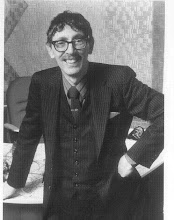
Dr. Franklin Ruehl, Ph.D.
Host, 'Mysteries From Beyond the Other Dominion'
GET UPDATES FROM Dr. Franklin Ruehl, Ph.D.
Like
26
A Trio of Intriguing Qs & As!
Posted: 02/21/2012 12:58 pm
Dr. Ruehl, can an ant survive being zapped in a microwave oven?
Most assuredly! Because most microwave ovens are characterized by so-called "hot spots," which are bombarded by microwaves, and "cold spots," which are free of them, an ant (or any other small insect) has a decent chance of surviving. This is tied into the problem of uneven heating due to "standing waves" formed when microwaves are reflected off of the oven's walls.
However, newer, more sophisticated models have minimized this problem, leading to more thorough cooking... and a reduced chance for the ant's survival within one!
Ruehl Fact: The fear of ants is termed "myrmecophobia."
Dr. Ruehl, are humans composed of stardust?
According to the "stardust hypothesis," the first generation of stars formed when the universe began with the "Big Bang" some 14 billion years ago. Within their broiling cores, heavier elements needed for human life, such as iron, were fashioned. As these stars died off, many as explosive supernovae, they yielded a reservoir of material in the form of titanic clouds of dust and gas from which succeeding generations of stars evolved, such as our own sun, with residual rings of material encircling them that ultimately coalesced into planets.
Hence, the planets, such as earth, should be composed of stardust. And accordingly, all life on such planets, including human beings, is hypothesized to be comprised of the essence of long dead stars!
While cosmological doctrine does hold that our sun evolved from gargantuan globules of cosmic dust and gas, there has been a debate as to whether those clouds were composed purely of stardust or of dust from rocky bodies, such as asteroids, that never were part of a star, or a combination of the two.
Intriguingly, astronomers have been analyzing interplanetary dust particles, or IDPs, which were retrieved from the earth's upper atmosphere by special NASA planes dubbed "High Altitude Dust Collectors." Incredibly, each IDP consists of approximately 100,000 individual minuscule grains, each only nanometers in diameter (billionths of a foot). Utilizing the new French NanoSIMs ion microprobe, astrochemists have thus far identified six grains that were definitely stardust originating from beyond our solar system.
Amazingly, they came from at least three different stars: a red giant; a metal-poor star; and a metal-rich star, perhaps a supernova. Overall, they determined that approximately 1% of interstellar dust is composed of actual stardust.
So it appears that we may owe a small part of our human condition to stardust, but not all of it. Obviously, further research is called for and is actually being conducted. For instance, the space probe Stardust, launched in February, 1999, has already collected several IDPs and has a rendezvous with the comet Wild 2 slated for January 2, 2004, where it will accumulate cometary particles, returning its cosmic sampling to earth after that time for a first-hand detailed analysis.
Ruehl Fact: In his book, "Vital Dust," Nobel Prize-winning chemist Christian De Duve argued that cosmic dust particles bearing organic compounds may have provided the basic building blocks for life on planets throughout the cosmic backdrop!
Dr. Ruehl, is there any way to recycle chicken droppings?
Incredibly, chicken dung may soon be utilized to clear up polluted water!
Researchers have recently created activated carbon pellets from fowl waste that have displayed a remarkable ability to absorb contaminant metals, such as copper, from water.
Use of chicken manure would combat two problems: the increasing cost of coal, which has provided the basis for activated carbon filters, and the disposal of chicken droppings which, up until now, have been of no commercial value.
Dr. Isabel Lima, research chemist at the Commodity Utilization Research Unit, Agricultural Research Service's Southern Regional Research Center in New Orleans, asserted, "It's turning poop to gold."

No comments:
Post a Comment